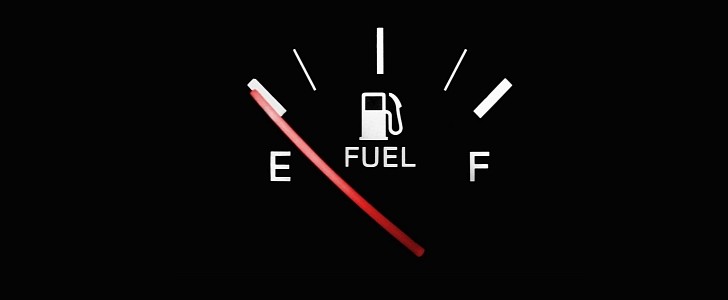In addition to unbearable traffic and over-the-top servicing fees at the dealership, few things get a driver’s anxiety going as the fuel gauge gets closer to empty. But as you may know, the miles-to-empty readout is rarely accurate because precise calibration is nigh on impossible.
According to the American Automobile Association, the accuracy varies a lot over shorter trips because the sensors and software that govern your fuel gauge are very sensitive to inconsistent acceleration. The AAA says that 74 percent of drivers use the miles-to-empty display to decide when to fill up when they are low on gas. Coincidence or not, these drivers could be taking an unnecessary risk by relying solely on the readout of their vehicles.
The not-for-profit organization recommends U.S. motorists to stop by the pump when the gauge reaches a quarter of a tank, and that’s arguably the most sensible advice for the aforementioned subjects. Driving the car until the fuel light comes on is a big no-no in every respect because driving on gasoline vapor may wear out and ultimately destroy the fuel pump. Your engine doesn’t like that vapor either, and there’s also the issue of tank crud.
Driving the vehicle with the fuel light on is a sure-proof way of getting the crud on the bottom of your tank into the fuel system and the powerplant. The yucky stuff comes from gas stations where the fuel storage tanks are low. The easiest way of identifying a gas station that's running low on dinosaur juice is to analyze the flow rate of fuel. If gasoline is dispensed at a slower-than-usual pace, then you invertedly pump some crud into your tank.
In collaboration with the Automotive Research Center of the Automobile Club of Southern California, the AAA used a dynamometer to run a selection of vehicles through simulated driving scenarios. On average, the fuel economy displays of the vehicles tested showed an error of 2.3 percent compared to the fuel economy measured by the dyno. Individual vehicle error varied greatly, ranging from minus 6.4 percent to plus 2.8 percent.
To the point, the first car overestimates fuel economy by 6.4 percent or 2.2 mpg while the other underestimates it by 2.8 percent or 0.9 mpg.
The not-for-profit organization recommends U.S. motorists to stop by the pump when the gauge reaches a quarter of a tank, and that’s arguably the most sensible advice for the aforementioned subjects. Driving the car until the fuel light comes on is a big no-no in every respect because driving on gasoline vapor may wear out and ultimately destroy the fuel pump. Your engine doesn’t like that vapor either, and there’s also the issue of tank crud.
Driving the vehicle with the fuel light on is a sure-proof way of getting the crud on the bottom of your tank into the fuel system and the powerplant. The yucky stuff comes from gas stations where the fuel storage tanks are low. The easiest way of identifying a gas station that's running low on dinosaur juice is to analyze the flow rate of fuel. If gasoline is dispensed at a slower-than-usual pace, then you invertedly pump some crud into your tank.
In collaboration with the Automotive Research Center of the Automobile Club of Southern California, the AAA used a dynamometer to run a selection of vehicles through simulated driving scenarios. On average, the fuel economy displays of the vehicles tested showed an error of 2.3 percent compared to the fuel economy measured by the dyno. Individual vehicle error varied greatly, ranging from minus 6.4 percent to plus 2.8 percent.
To the point, the first car overestimates fuel economy by 6.4 percent or 2.2 mpg while the other underestimates it by 2.8 percent or 0.9 mpg.

